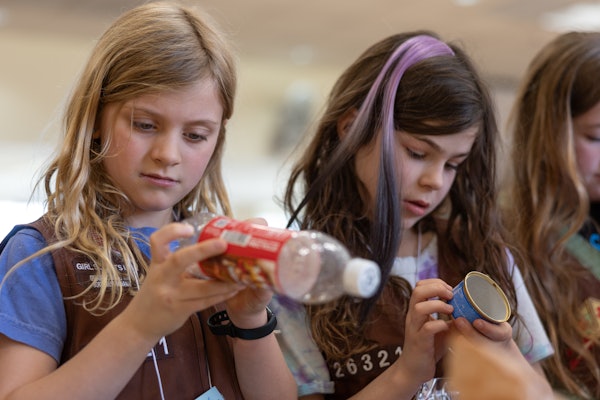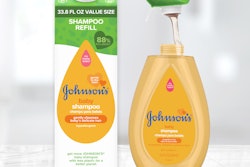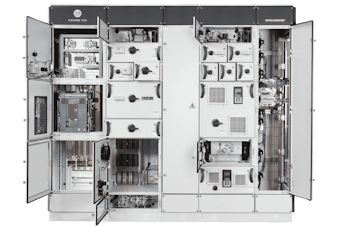Facilitating relationships in an effort to find good solutions that are fit for purpose and generate a return on investment for all trading partners in the grocery supply chain.
That, in a nutshell, is the essence of what James Tupper does at IGD, a not-for-profit organization whose goal is to be the leading expert on international food and grocery retailing and supply chain. At IGD, Tupper’s title is ECR Learning & Change Manager. ECR, of course, stands for Efficient Consumer Response.
Tupper reached the Packaging World radar screen by way of his presentation at the Australian Institute of Packaging’s 2010 national conference in Melbourne. One whole track of the AIP conference was devoted to Retail Ready Packaging, and Tupper was kind enough to share with Packaging World his PowerPoint presentation on RRP. His organization’s knowledge of this segment of the packaging arena is so far-reaching, we’ve chosen to engage IGD in stories this month and next. See our October issue for part two.
Packaging World:
James, what exactly is your role at IGD?
James Tupper:
I develop programs aimed at getting all trading partners in the grocery supply chain—retailers, consumer packaged goods companies, and packaging material suppliers—to recognize the requirements of retail-ready packaging at a very practical, pragmatic design level.
Why include packaging material suppliers?
Because the only way to move the grocery supply chain forward is by being all-inclusive. Besides, packaging suppliers are uniquely positioned to get CPG companies to think about the types of solutions the CPGs could be adapting to grow their category by improving the appearance of products while improving on-shelf readiness and availability at the same time. But getting back to what I said about being all-inclusive, it’s equally important that the trading partners throughout the grocery supply chain make a concerted effort to think cross functionally. So not only do you want to bring CPGs and packaging suppliers and retailers together, you also want to bring together people from different silos within the same organization. Too many solutions out there are not truly effective retail-ready solutions because somebody in one silo judged the solution good when in fact it’s only good from one departmental perspective and doesn’t deliver any benefits along the rest of the supply chain.
Is there a difference between shelf-ready packaging and retail-ready packaging?
We prefer the term Retail-Ready because it better encompasses the whole supply chain. It also better describes a key form of RRP: the merchandising unit that sits right on the retail store floor on its own base, often at the aisle end.
How do you define Retail-Ready Packaging?
It’s an approach to packaging wherein eleven key activities are easy to do. We call them the eleven Easy-Tos [see Figure 1]. Four major stakeholders—shoppers, distribution people, CPG companies, and retailers—are the beneficiaries of these eleven items. The shopper wants packs that are easy to pick into a cart and easy-to-find products within the category. Stakeholders involved in distribution want packaging that’s easy to transport along the supply chain. CPGs want packaging that’s easy to pack on line. As for the retailers, their Easy-To list is the longest. The retail-ready package they’re looking for should be easy to reduce and dispose of, easy to rotate by date code, easy to open to access the primary packs inside, easy to identify in hand, easy to locate in the back room, and it should be designed so that store personnel have no difficulty filling the cubic space assigned to it.
Is there a history or chronology behind RRP?
Back in 2005 at Tesco, Liz Hulbert and her team started to run RRP sessions for their CPG supplier base right in the Tesco stores. We later did the same with Sainsbury’s. Then in 2008 we started in the Baltic and Nordic regions and later in Australia. And since last November, we’ve been running a lot of sessions in North America with WalMart Canada. Even more recently we’ve gotten the go-ahead to run these RRP sessions at WalMart here in the UK, which is great because we want to include the world’s largest retailer as extensively as we can. In this case of course it’s Asda WalMart, the name they trade under in the UK. Regardless of where these RRP sessions are held or in which chain of retail stores, there’s a lot of hands-on activity. Filling shelves, following product as it leaves the back room of the store, opening secondary packaging and filling gaps on store shelves—it’s all absolutely crucial. It’s only when the suppliers have this kind of practical hands-on experience that they start to understand the frustrations of the store operations people where secondary packaging is concerned.
By ‘suppliers’ I assume you mean CPG companies?
Generally yes, but these sessions have included suppliers of packaging materials, too. We just had a session where one of the CPG companies brought along four of their packaging suppliers. We went on an in-store night fill and then the next morning we met to distill the learnings and put together some action plans to explore opportunities for further improvement in areas like product availability and product appearance.
Where are some signs in today’s stores that progress is being made, and what shifts in attitude or approach do you expect to see in the near future?
One place where RRP is most evident is in a category like refrigerated luncheon meat. Nowadays, the product actually faces the shopper. Five years ago those luncheon meat packs would have been horizontally oriented and lined up like stacks of pennies. Now we not only have the packs standing up and shouting their branding message to the shopper, we have the primary packs in a secondary packaging solution that lets store operations people put multiple packs on shelf in one movement. As for shifts in attitude, peg display is being re-examined. Pegs are very difficult when it comes to stock rotation. To put the new stuff in at the back, you must first remove everything from the peg, put the new stuff on the peg, and then replace what you just removed. It’s anathema to any sense of easy stocking, particularly in fresh foods. With some of the work we’re doing in the fresh category in North America, we’re finding that as you move from pegs into a packaging solution on the shelf, you actually increase the utilization of the display cube, which in turn lets the retailer fit in a broader range of items and a greater amount of stock. So at the same time you make it easier for store staff to rotate the product, you’re actually giving the shopper more choice.
As UK retailers have pushed their suppliers for more RRP, have they made any noticeable mistakes that North American retailers might learn from?
I think the retailers were a bit slow in communicating that CPGs could exploit RRP as a marketing advantage. What happened instead was basically a number of retailers saying to their suppliers, ‘Look, the rising cost of labor has made it essential that we improve productivity in our stores. Send us your solutions.’ The retailers should have been telling their suppliers something more like this: ‘Look, I want to give you the opportunity for more space at the shelf-edge label to display information that’s going to be helpful to the shopper, that will help shoppers pick the variant they want and find the brand that they want in their cart.’ Because done well, RRP really is a marketing strategy for the CPG companies, not just a way to cut costs. A good example of this is in Italy, where the retail industry is more fragmented and there hasn’t been any one retailer that has taken a lead in marching forward with RRP. In that market, it’s been the multinational CPG companies that have recognized the opportunity to utilize RRP to improve product availability and improve the appearance of products on the shelf. That has been the driver of RRP rather than retailer interest in in-store productivity and the redirection of staff to consumer-service kinds of activities. CPG companies are exploiting RRP as a marketing strategy.
Retailers should also resist letting CPG companies simply slip into compliance mode or do the absolute minimum in response to design specifications set forth by the retailer. Sometimes by complying with these specs, the CPG company may win extra facings. But was the solution they delivered tested by store personnel or by people in the distribution center? Instead of being merely compliant, the CPG company should be building their understanding, asserting their own ideas, helping to cut through confusion, challenging the status quo, and actively innovating in a way that will optimize RRP design and execution.
Testing is also often overlooked. Testing can happen at several levels, but one good way is for the CPG company to send sample solutions that they are proposing so that the trading partners know first hand how the proposed RRP solution actually works, particularly during distribution and that crucial 50 yards between the store’s back room and the shelf.
How do retailers respond when a CPG company says RRP isn’t an option because it’s not in their budget?
I know of one RRP project manager at a leading European retailer whose response was that the money is there, they’re just looking in the wrong pot. He advised them to look at their trade marketing budget to see what is spent on point of purchase materials. Maybe some reallocation there could be a big help.
Can you comment any further on the Easy Tos?
Easy to find in the back room of the store is an area that holds tremendous potential for improvement. It’s terribly important that things like variants-is it regular laundry detergent, vanilla-scented, peach-scented-and size of primary package are clearly identifiable on the case, and I mean identifiable from several meters away. If I’m part of in-store staff, remember what I’m facing in the back room: a skid with loads of cases on it and I need to home in on one specific product, variant, and primary container size so I can fill a gap out on the store shelves. Look at Figure 1, which shows a RRP for a variant of dish washing liquid called Pink Petals. It’s a reasonably good RRP solution with some good aspects to it, especially the simple line drawings of the primary pack. Store staff is accustomed to handling the form and shape and feel of various products, and they respond to this line drawing—note it’s repeated on both sides of the case—very quickly.
Such drawings are better than brand information?
Much better than brand information. A lot of brand owners are really quite misguided about the extent to which their brand is recognized. It’s perfectly understandable, because it’s a marketeer’s business to make sure their brand is recognized by everybody on the planet. But in this case brand recognition is not what we’re after. But returning to the handling of product variant, look how in-store staff have had to use a ball point pen to add the initials PP, which of course stands for Pink Petals, to the short end of the case. That product variant information should be on the short end as well as the long end of the case. It’s the short end of the case that is more likely to be visible when a case is placed on capping shelves or on racking in the back room. Store staff should not have to spend time or effort modifying RRP to help them manage cases in the store.
How about Easy-To open and stock?
One style of RRP that has gotten popular is the tear strip that is supposed to make a case easier to open than if store personnel had to use a knife or rip off tape or open flaps that are glued. But this RRP solution should be looked at carefully. The tear strip may require five or six movements. First I pull it along one edge, then I rotate the case 90 degrees, then I tear it along another edge, then I rotate it another 90 degrees, then I tear it a third time, and finally the merchandising unit holding the primary packs is ready to be placed on the store shelf. How much time are we really saving with such an opening device?
Also, instructions should be as pictorial as possible. When you are a member of a crew night-filling shelves, you don’t stop to read instructions. You want to look at a case and open it.
Any concluding observations, particularly for retailers and their trading partners who are only now getting launched on RRP?
Two things I would emphasize in closing. First, a structured approach is essential, and I think that is summed up pretty neatly in Figure 2. I would also emphasize the importance of taking a category approach. Take confectionery, for example. If a retail buyer in confectionery decides on a RRP program for his category, he might just issue an announcement to all suppliers that henceforth the product will be sent in RRP. This will set off a chain of events whereby each supplier will attempt to deliver the solution independently from all the other suppliers in the category. But it would be much better if the buyer tried instead to move the whole category forward in a cohesive manner. Communicate to all suppliers in the category what shelving and fixtures will be like, how the needs of the in-store staff should be taken into consideration, how distribution centers and their automated handling systems come into play, and so on right through the supply chain. This category approach will make it easier for one supplier to come up with a RRP solution that fits in nicely with that of a supplier who will be his neighbor on the shelf. The goal is a set of solutions that the store staff will use consistently and shoppers will buy more from.






















